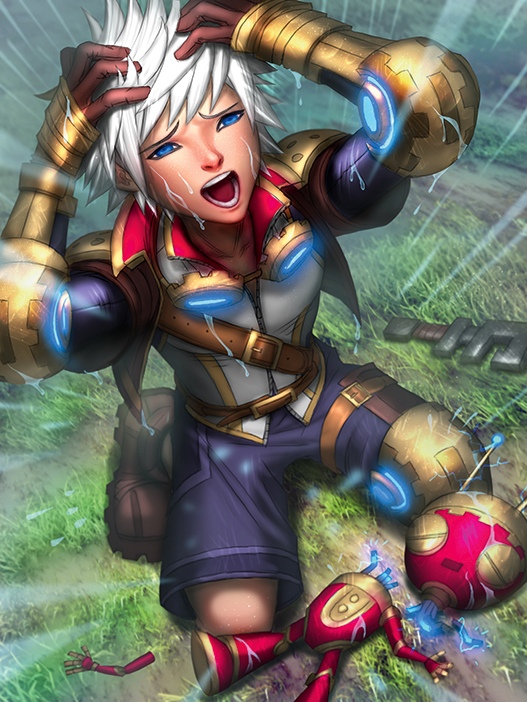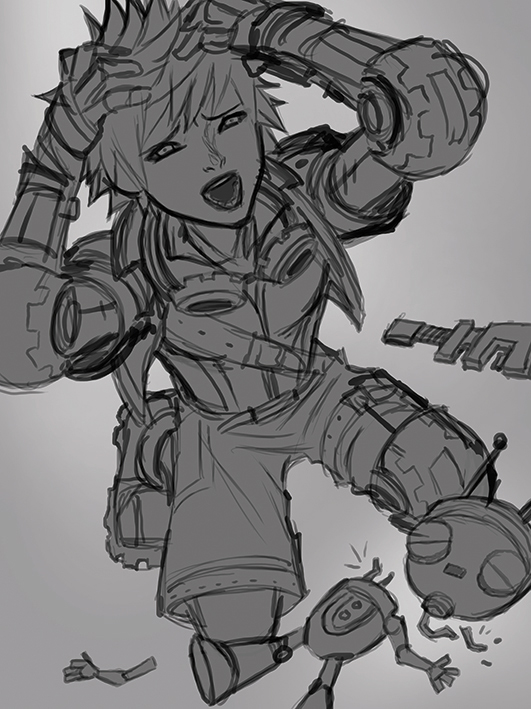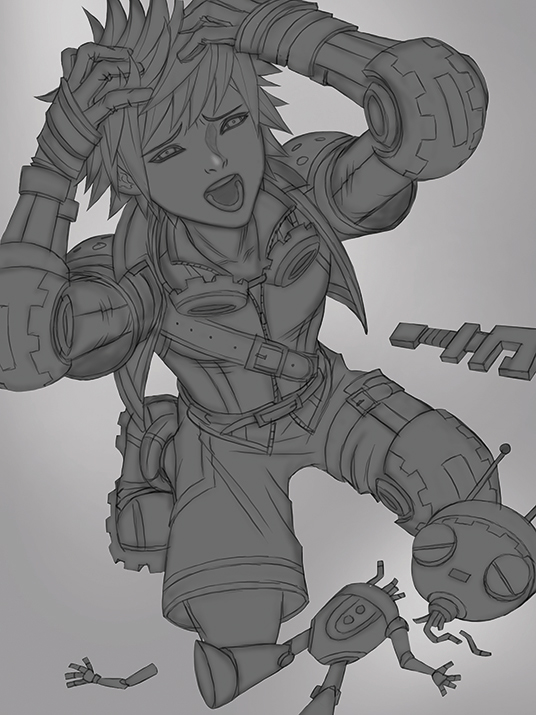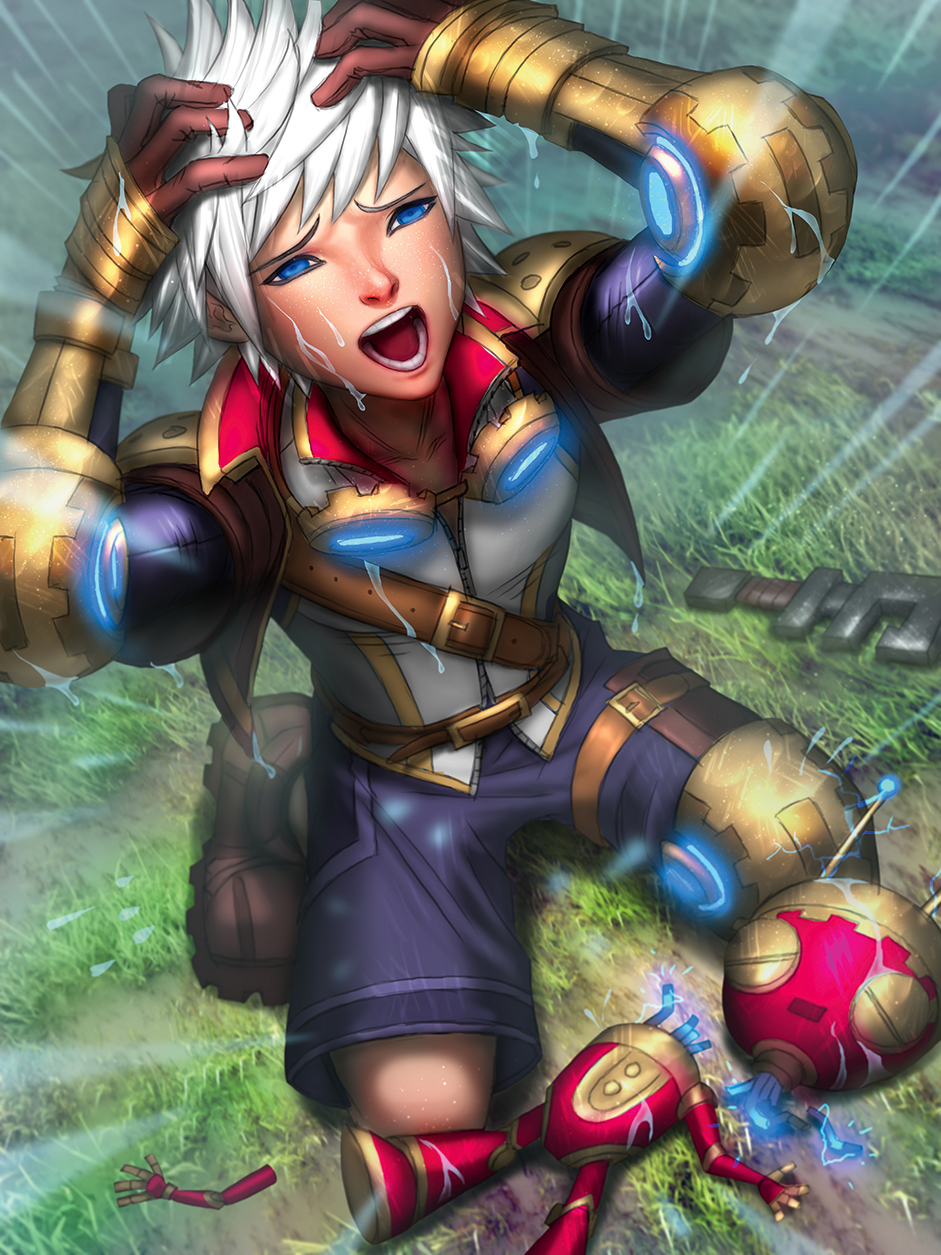4 top tips for drawing an anguished character
Discover how to create a character with an anguished expression with this expert advice.

To convey strong emotion when it comes to how to draw a face, I make use of all the elements in my image: posture, expression, setting, storytelling, colour, mood and composition. I first gather references of anguish from the web, recognising that it’s very close to physical pain – hence the screwed-up eyes and furrowed brows. In sketching out the basic pose and composition, I try to tell the story of the reason for the character’s pain, in this case the destruction of his robot friend.
I choose the camera angle to focus attention on his facial expression but also pay attention to the posture, which communicates his anguish. I then detail the image with line art, clarifying his facial expression and all of the important details in the image.
When the line art is finished, I add the colour and lighting to focus attention on the key areas, with the face highlighted and red elements to draw the eye to both the character’s face and his robot. Elsewhere I use cool colours to create a sad mood, and add rain to show that the environment is rainy and moody, emphasising the sadness of the scene. See how I pieced together my image below.
01. Collecting research material

I first gather reference of anguish from the web. The images I’ve used show people with their hands on their heads in disappointment, mouths open and eyes and eyebrows squinted and furrowed in pain. In this example, I don’t copy the references exactly. I only use the references to get the basic facial expression and pose, but I draw it at a different angle in this scene.
02. Laying out the pose

I first sketch out the basic pose and composition, showing the reason for the character’s pain. In this scene, the character is a young inventor and mechanic and the robot friend he built has been broken and is lying in pieces in front of him. The camera angle is placed above the character to capture his facial expression in detail to communicate his anguish and sadness.
03. Adding line work

I then detail the image with line art, clarifying the facial expression and important details. Other storytelling details are important in this phase, like the gear shapes on the character’s armour, communicating that he’s a mechanic or inventor. I repeat the gear shapes in the robot, implying that it was possibly built by the character. I also add details to hair and clothing.
04. Blocking in colour

Once the line art is finished, I add the colour, lighting and rendering. I use red to make the viewer look at both the character’s face and his broken robot. I then add rain and atmosphere to distant objects to show that the environment is rainy and moody, further communicating the sadness of the scene. I also use cool colours in the scene to make it feel sad and dreary.
This article was originally published in ImagineFX magazine issue 141. Buy it here.
Related articles:

Thank you for reading 5 articles this month* Join now for unlimited access
Enjoy your first month for just £1 / $1 / €1
*Read 5 free articles per month without a subscription

Join now for unlimited access
Try first month for just £1 / $1 / €1
Get the Creative Bloq Newsletter
Daily design news, reviews, how-tos and more, as picked by the editors.

Michelle Hoefener has worked in the gaming and entertainment industries for six years now. And she's been painting and publishing her work online for well over 15 years.
